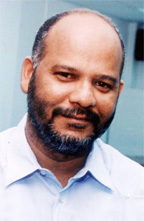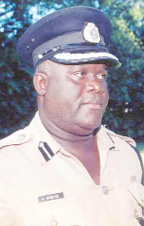What does the current murder rate and motives tell about living in Guyana?
A country’s murder rate is an infallible indicator of the value that its people place on human life. In Guyana’s case, the images of the bodies of murdered victims flung onto the floors of police wagons, of the cadavers of seamen washed up on the foreshore or, as in the aftermath of the Bartica township massacre, stacked like animal carcasses in an open boat, no longer astonish. These images are a reflection of the real loss of respect by officials even for human remains. They suggest a cynical disregard for life.
 A high murder rate could be an indicator, also, of the country’s cultural level. It could mean only that, as Guyanese, we are more likely than, say, the Japanese, to resolve conflicts by the resort to extreme violence. Human life has been cheapened and many crimes and conflicts conclude in murders. The question to be asked is whether there is growing acceptance of violent, criminal conduct that is claiming such large numbers of victims in such a small population? The United States Embassy in Georgetown, for good measure, continues to warn its citizens through its travel advisory that the murder rate in Guyana is three times that of the USA!
A high murder rate could be an indicator, also, of the country’s cultural level. It could mean only that, as Guyanese, we are more likely than, say, the Japanese, to resolve conflicts by the resort to extreme violence. Human life has been cheapened and many crimes and conflicts conclude in murders. The question to be asked is whether there is growing acceptance of violent, criminal conduct that is claiming such large numbers of victims in such a small population? The United States Embassy in Georgetown, for good measure, continues to warn its citizens through its travel advisory that the murder rate in Guyana is three times that of the USA!
Miners have been robbed and killed by armed bandits in the vast hinterland west of the Essequibo River. Fishermen have been killed and tossed in the Atlantic by pirates along the coast. Wives, widows and women living alone in villages have become vulnerable victims of murder. Schoolgirls in isolated areas have been the prey of feral men and drunken rum-shop revellers. ‘Businessmen’ have been ‘executed’ by unidentifiable contract killers. Family homes have been set alight by vengeful spouses and partners. These are all distressing signs of social disintegration.
It is more than a coincidence that the rising tide of trafficking in illegal narcotics over the last decade brought waves of criminal violence to this country. Narco-trafficking, invariably, has been accompanied by gun-running. Firearms are imported illegally to support the expansion of drug empires and to conduct enforcement operations against rivals. The consequences have been that, over the past decade, Guyana earned a ghastly reputation for contract killings, executions, massacres and an above-average murder rate.
![]() There were about three cases of murder and manslaughter every month in colonial British Guiana fifty years ago. There is about one murder every three days in independent Guyana today. Guyana’s murder rate per 100,000 members of the population seems never been in single digits over the past two decades. It soared to 19.2 per 100, 000 during the troubles on the East Coast in 2003-2005 but fell to 15.1 in 2008. There were 1,100 murders during the period 1990-1999. This rose to 1,431 during the period 2000-2009 as shown on the table.
There were about three cases of murder and manslaughter every month in colonial British Guiana fifty years ago. There is about one murder every three days in independent Guyana today. Guyana’s murder rate per 100,000 members of the population seems never been in single digits over the past two decades. It soared to 19.2 per 100, 000 during the troubles on the East Coast in 2003-2005 but fell to 15.1 in 2008. There were 1,100 murders during the period 1990-1999. This rose to 1,431 during the period 2000-2009 as shown on the table.
About one-third of all murders are caused by shooting with firearms; about one quarter have been by battering, chopping and stabbing with blunt or sharp objects. Commissioner of Police Henry Greene reported at the end of last year that “most robberies are committed with guns” and that the availability of illegal firearms was a major challenge for the Force. There had also been an increase in the rental of illegal firearms, most of which were used by bandits. The Force seizes about 150 illegal firearms annually.
Most murders still occur in the most densely populated region of the country –Demerara-Mahaica. This, paradoxically, is followed by the least densely populated Barima-Waini, Cuyuni-Mazaruni, Potaro-Siparuni, Upper Takutu-Upper Essequibo and Upper Demerara-Berbice hinterland regions.


Most murders in Guyana seem to fall within six unofficial categories – domestic (including killing of partners, relatives and spouses); disorderly conduct (including arguments about money, property or rivalry); executions (including assassination, contract killings, gang warfare and illicit narcotics enforcement); extra-judicial killings (the monopoly of the security forces); felonies (arson, banditry, piracy, rapes and robberies) and miscellaneous killings (including massacres resulting from undetermined motives.
Most murders which occurred in 2009, according to police sources, were domestic in nature. Such murders which result from soured spousal relations have been increasing in ferocity and frequency. There is yet no clear pattern of causation except that they tend to occur largely in rural areas. This year, for example, men have murdered their partners in Betsy Ground, Crabwood Creek, Glasgow, Port Mourant and Skeldon in Berbice; Vigilance Village on the East Coast; Herstelling on the East Bank Demerara; Nismes on the West Bank Demerara; Leonora on the West Coast Demerara and Charlestown and Sophia in Georgetown.
Most rape-murders in recent years also seem to have occurred in rural communities – in Wakenaam and Leguan Islands in the Essequibo River; Naamryck and Parika on the East Bank Essequibo; Johanna Cecilia and Onderneeming on the Essequibo Coast; Maida, Port Mourant, Tain and Warren on the Corentyne Coast; Good Faith, Mahaicony and Mocha-Arcadia on the East Bank Demerara.
The Guyana Human Rights Association in two reports – Without Conviction: Sexual Violence Cases in the Guyana Justice Process and, Justice for Rape Victims: Reform of Laws and Procedures in Guyana – warned of the declining rate of conviction for rape cases in the courts while the number of reported rapes had increased. Rapists appear to have little fear of the criminal justice system.
Rural rape-murders show, particularly for women and girl children in certain areas of this country, the low level of human security.
The Police Force seems to have been stumped by the new wave of Guyanese murder by ‘execution’ this year. Several business-persons have been murdered, seemingly without motives or attempts at robbery. Head of the Police Force’s Criminal Investigation Department Assistant Commissioner Seelall Persaud, indicated to the Stabroek News that some ‘execution-murders’ have been “drug-related.”
The nexus between narco-trafficking and murders is unquestionable. The law-enforcement agencies have not been able to bring the illegal narcotics trade under control and, as long as the trade thrives, drug-related killings can be expected to continue. Traffickers will murder to extend their turf, eliminate rivals and punish delinquent debtors.
The several killings of suspects in ‘confrontations’ with the police seem to have become normalised as the collateral consequences of law-enforcement actions. The Guyana Human Rights Association’s landmark study – Ambivalent about Violence: A Report on Fatal Shooting by Police in Guyana, 1980-2001 – established the fact that, in 21 years, the police had killed 239 persons, an average of over 11 persons per annum. The period covered by that study stopped before the troubles started on the East Coast. Despite the furore over the killing of a schoolboy this year, the Guyana Police Force boasted about the significant reduction in police killings from the wild, high peak of 34 persons in 2002 at the start of the troubles to a mere four persons so far in 2010.
Guyana’s jungle west of the Essequibo River has become a very lawless place where someone is murdered somewhere every month. Bandits easily exploit the Police Force’s inability to effectively patrol the ‘bush’ in order to commit crimes. The Force is hopelessly under-resourced – without the aircraft, vehicles, vessels, personnel and other assets to investigate crimes in the widely dispersed villages, logging camps and mines in the hinterland.
Hinterland security is complicated by the fact that bandits can commit robberies with violence and, occasionally, murders and escape into the ‘bush.’ Narco-traffickers have better knowledge and superior transport resources in the hinterland than the law-enforcement agencies. They can land foreign light aircraft on unused airstrips or isolated tracts along all-weather roadways to take delivery of illegal narcotics from other South American cartels. With their all-terrain vehicles and speedboats, smugglers also evade police checkpoints.
Water-borne pirates, like land-based bandits, are not afraid of the poorly-equipped Police Force. Minister of Home Affairs Mr Clement Rohee and Minister of Agriculture Mr Robert Persaud, for the first couple of years after their respective appointments in 2006, evinced some interest in the problem of maritime piracy. Despite their efforts, little has been achieved to counter the raft of maritime crimes and the murders that occasionally accompany them.
It remains one of the most astonishing episodes of governance in Guyana that the assassination of a cabinet minister could have occurred without an independent commission of inquiry having been appointed to investigate the crime. More ludicrous was the fact that the Police Force could manage to kill every suspect named as a potential witness then barefacedly announce that the case had ground to a halt because all of the witnesses were dead! The killing of the minister was emblematic of the employment of execution-murder. This was equalled only by the Force’s extra-judicial killings which eliminated the witnesses.
Assistant Commissioner Seelall Persaud, Head of the Police Force’s Criminal Investigation Department seems to be mystified by all the murders. He told the Stabroek News that the Police Force continues to face numerous challenges. He attributed the Force’s inability to solve crimes to its limited forensic capacity, lack of cooperation from witnesses and the public and the exodus of experienced officers.
The fact is that transnational crime has been transformed but the Police Force has never been reformed. It does not possess the resources to deal with the new breed of entrepreneurial crooks who have prospered over the past decade of indulgence. The Police Force, as currently structured and resourced, will remain incapable of solving, or even stopping, these murders.
In the final analysis, it is the administration’s duty to protect the public from the scourge of murder by an underworld enriched with narco-dollars, emboldened by the feeble criminal justice system and armed with deadly weaponry. Death by murder has become commonplace as much because of the new criminality of the narco-cartels as of the incapacity of those who have failed to bring them to justice.
